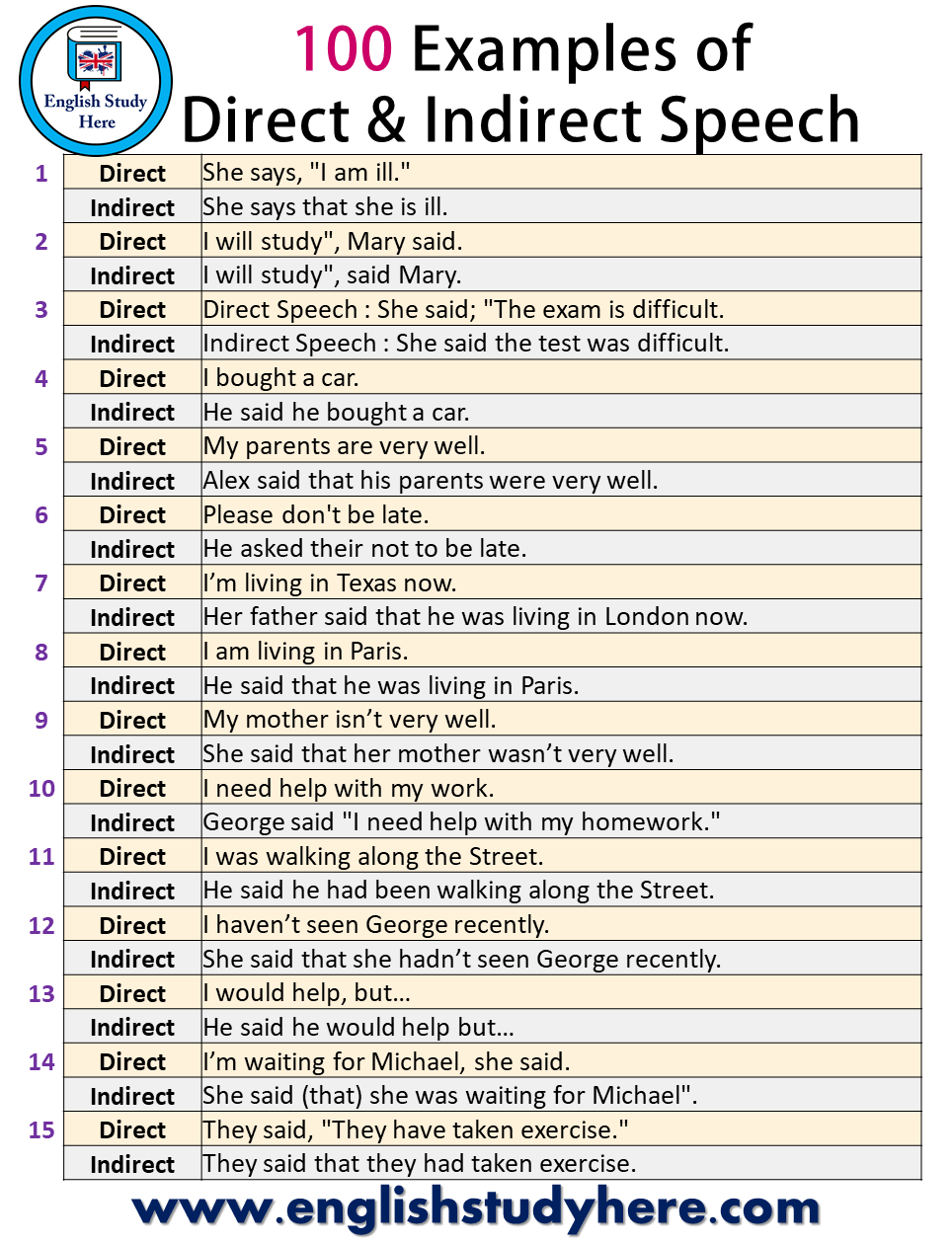
100 Examples of Direct and Indirect Speech English Study Here
Direct: Mary said, "I am going to the US next month." Indirect: Mary said that she was going to the US the following month.; Direct: The sports teacher said, "Run fast, boys." Indirect: The sports teacher asked the boys to run fast.; In these two examples, you might have observed that when we use direct speech, we use quotations to outline the real words of the speaker.

Rumus Direct And Indirect Speech
Note: That is often implied in indirect discourse. It is not mandatory to use it, so it is indicated in brackets in this lesson. Introductory verbs To relate someone's words to both direct and indirect speech, you need an introductory verb. The two most frequent are tell and say, but there are many other possible ones like: ask reply warn
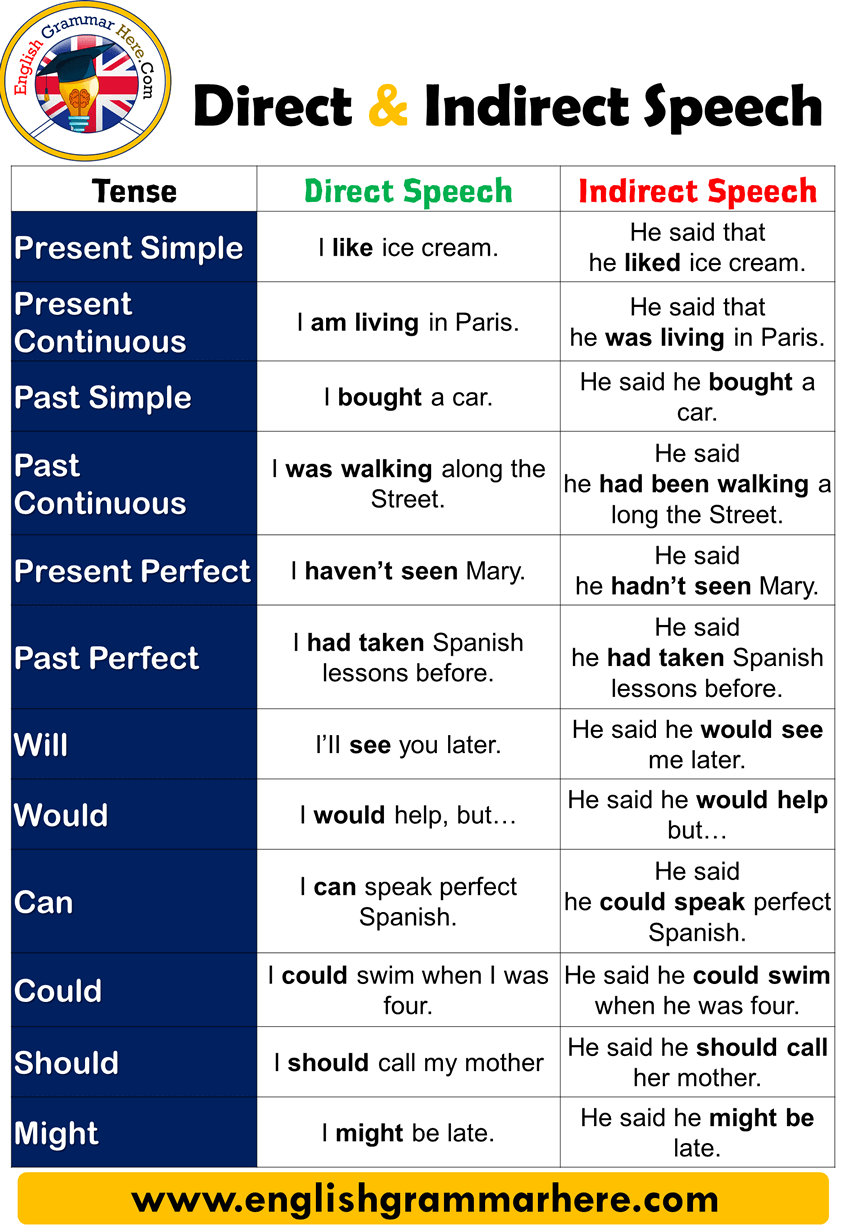
Direct & Indirect.
For direct and indirect speech complete rules click: Direct and indirect speech complete rules. Direct and Indirect of Past Perfect Tense. Tense Change: As a rule, whenever we change a sentence from quoted speech into reported speech, we go one tense back. But if we have past perfect tense in direct speech, we use the same tense in indirect.

Direct and Indirect Speech Verb Tense Changes Grammar 7 E S L
Differences between Direct and Indirect Speech. Change of Pronouns. Change of Tenses. Change of Time and Place References. Converting Direct Speech Into Indirect Speech. Step 1: Remove the Quotation Marks. Step 2: Use a Reporting Verb and a Linker. Step 3: Change the Tense of the Verb. Step 4: Change the Pronouns.

REPORTED SPEECH PENGGUNAAN DIRECT AND INDIRECT SPEECH RUMUS DAN CONTOH YouTube
Rule 3: Reporting Verb Request, Advise, Order, and Beg. To report imperative sentences, "Request", "Advise", "Order", and "beg" are often used. Direct: He said to me, "Go home at once". Indirect: He ordered me to go home at once. Direct: She said, "Do not run in the sun". Indirect: She advised not to run in the sun.".
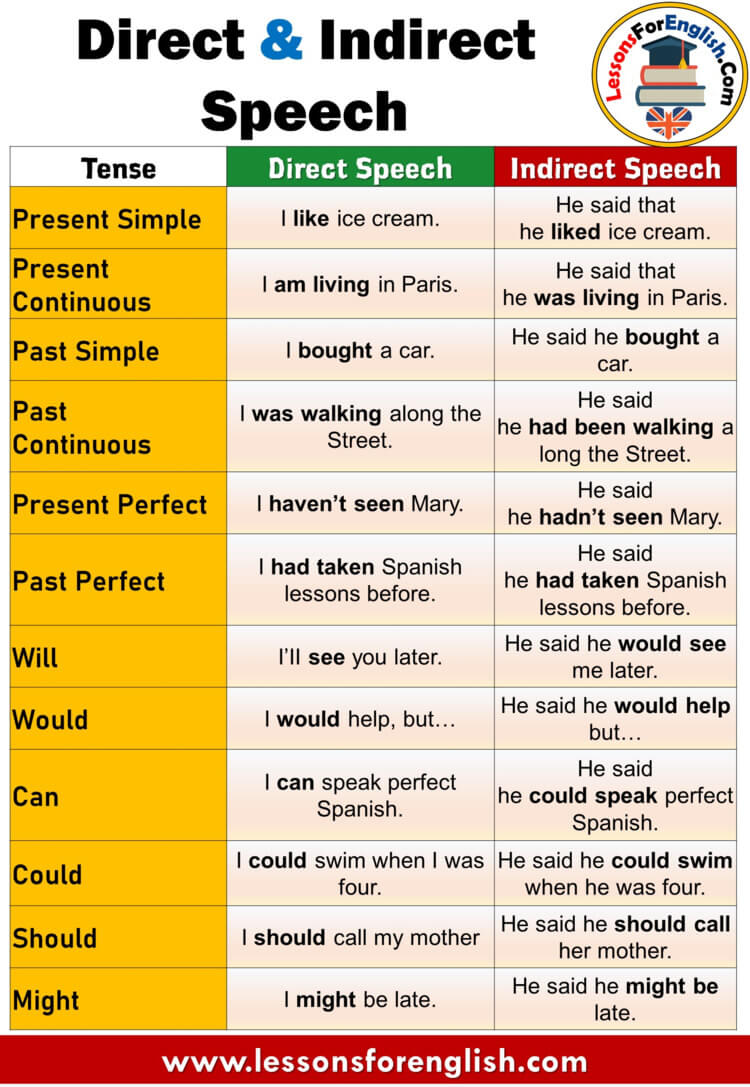
Direct & Indirect Speech, Tenses and Example Sentences Lessons For English
Converting Direct to Indirect Speech. 1. Eliminate the quotation marks that enclose the relayed text. 2. Retain the tense of the reporting verb and add the word "that" after it. 3. Change the tense of the verb in the reported speech, if needed. 4. Change the pronouns accordingly.
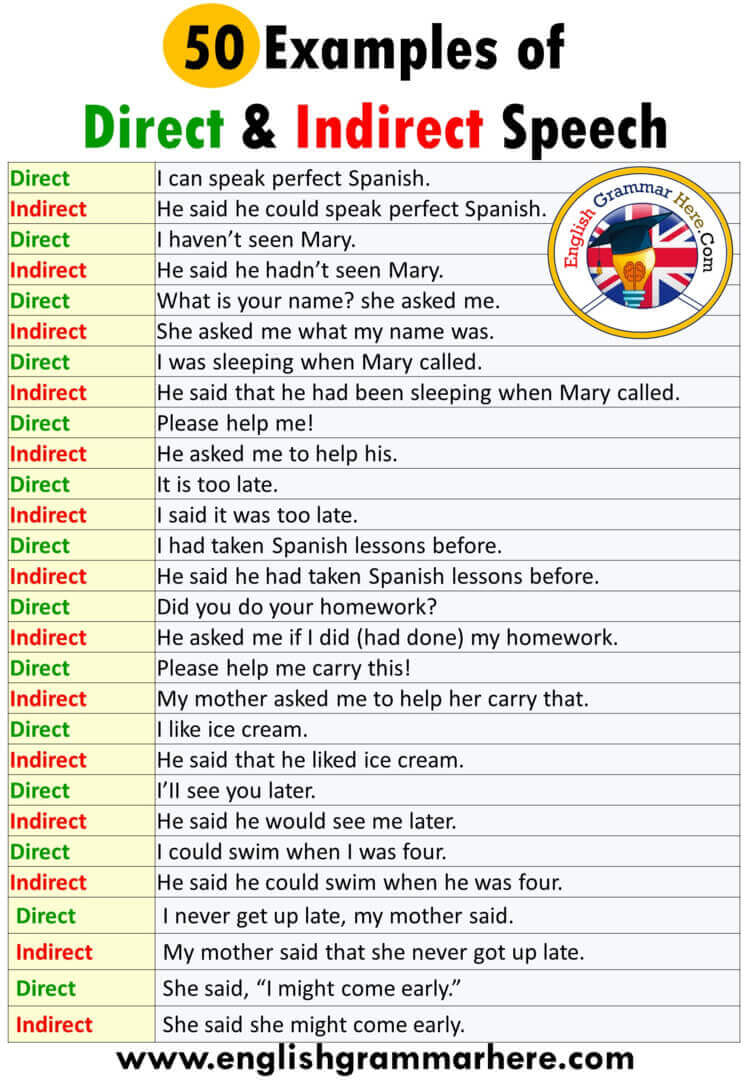
50 examples of direct and indirect speech English Grammar Here
Here are the steps involved in converting direct speech to indirect speech: Remove the quotation marks. Use a reporting verb to introduce the indirect speech. Change the tense of the verb in the quote if necessary. Change the pronouns if necessary. Use the appropriate conjunction if necessary.
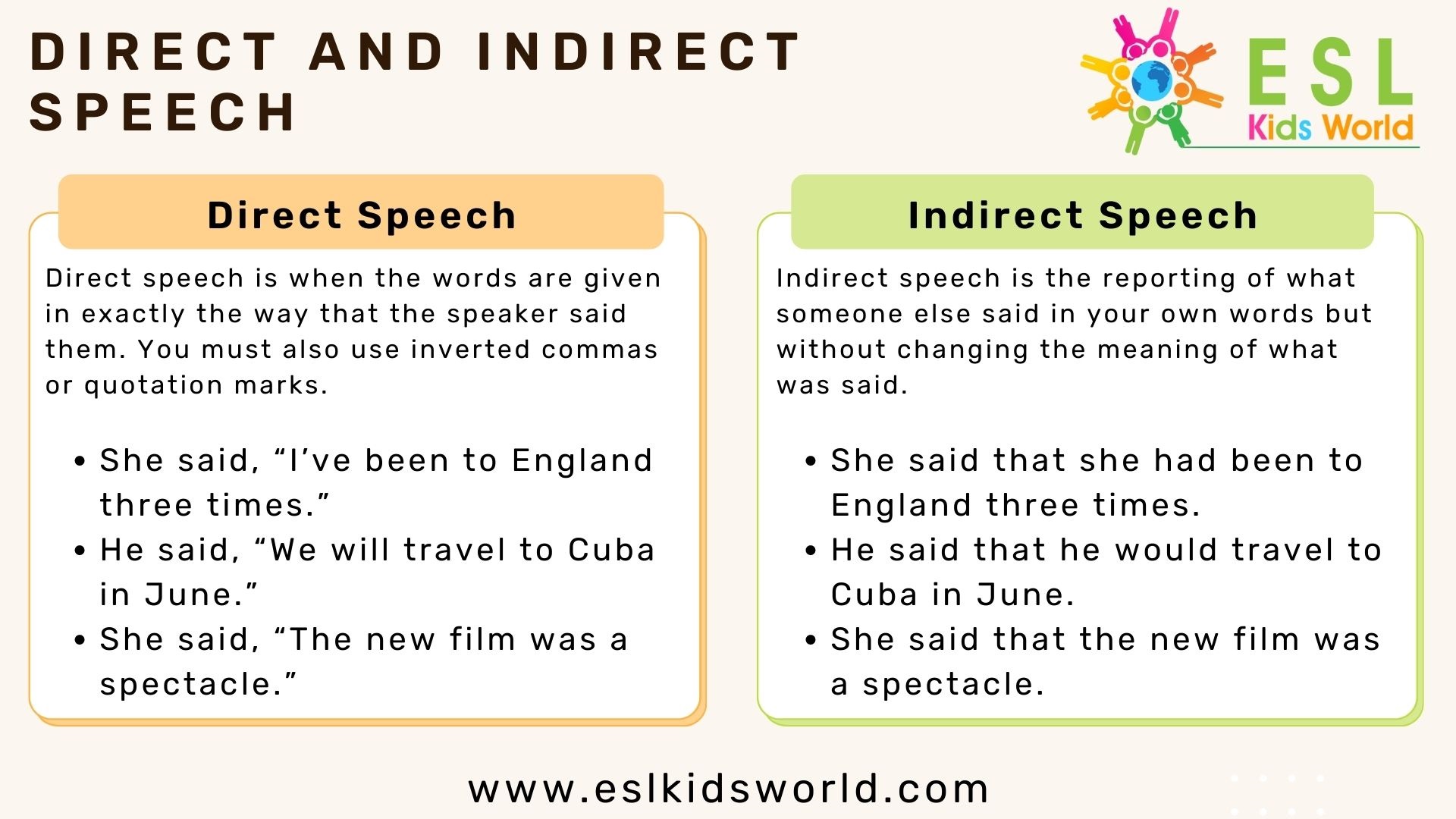
how to write direct and indirect speech in english
Direct and Indirect Speech - Bahasa Inggris Kelas 12. by Gracia Carolina. November 17, 2021. 0. Artikel ini membahas materi direct and indirect speech untuk Bahasa Inggris Kelas 12 termasuk definisi, rumus, dan contoh soal. Hai sobat Zenius, kembali lagi bersama gue, Grace! Kali ini kita akan bahas salah satu fitur bahasa Inggris: direct and.

50 Examples of Direct and Indirect Speech »
Mathilda told me she had to go out. (Indirect Speech) Mathilda said: "I have to go out.". (Direct Speech) Julie asked if the train had left when she arrived at the ticket office. (Indirect Speech) Julie asked: "Did the train leave?" (Direct Speech) It is too late. I said it was too late.

Pengertian Dan Contoh Direct And Indirect Speech My XXX Hot Girl
You can do this while speaking or writing. There are two kinds of reported speech you can use: direct speech and indirect speech. I'll break each down for you. A direct speech sentence mentions the exact words the other person said. For example: Kryz said, "These are all my necklaces.". Indirect speech changes the original speaker's words.

Direct and Indirect Speech Pengertian, Penjelasan Lengkap dan Cara Perubahannya
Indirect: I was curious if you're going to the party tonight. Note: In indirect speech, tenses often shift back (e.g., "does" to "did", "is" to "was") as the speech is typically reported at a later time than when it was initially said. However, this shift is not necessary if the information is still true or relevant at the time of reporting.

Direct Indirect speech with examples and rules pdf
Contoh kalimatnya dalam bahasa Indonesia misalnya: "Kata Fakhri, besok kita ada ujian matematika di jam pertama, ya". Nah, kalau dalam bahasa Inggris, kalimat tersebut dinamakan indirect speech. Oh iya, kamu tidak perlu menggunakan tanda kutip untuk menyampaikan Indirect Speech ini ya. Selain itu, karena konteksnya kita menyampaikan sesuatu.
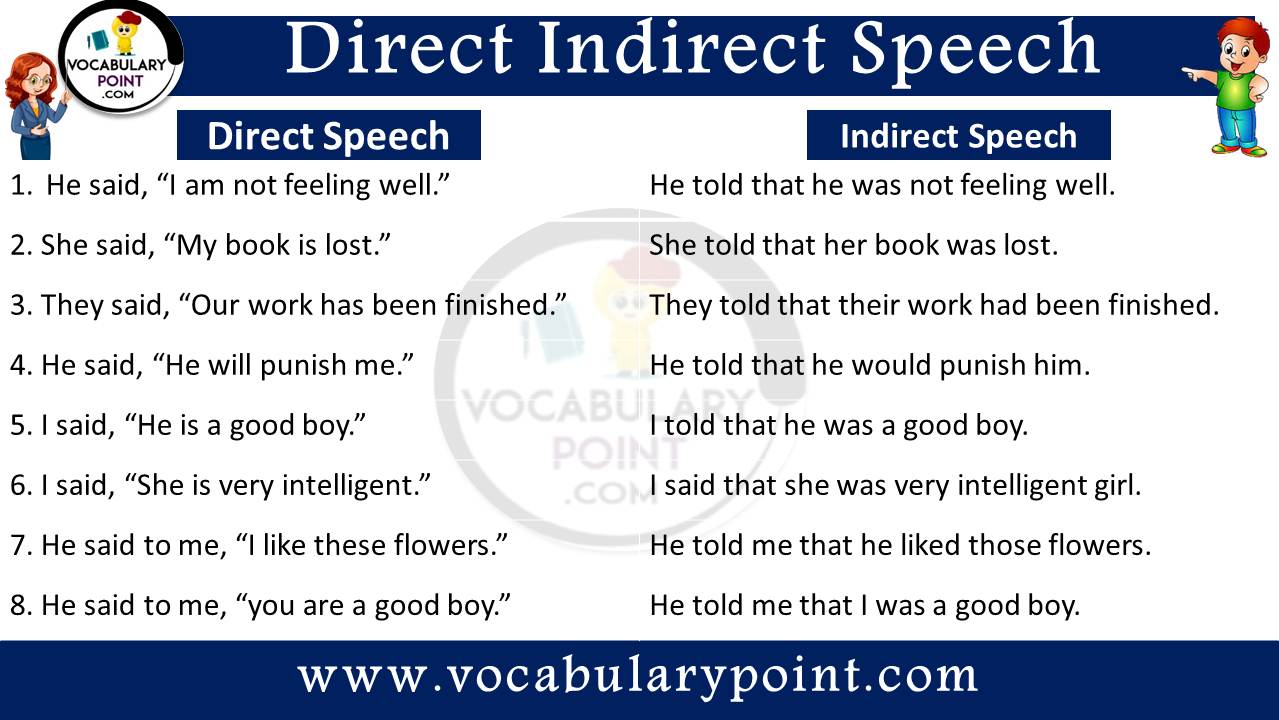
Direct Indirect speech with examples and rules pdf Vocabulary Point
Verbs of Reported speech (if the reporting verb is in past tense) (list 2) Direct speech → Indirect speech Am / is / are → was / were Was / were → had been Has / have → had Had → had had Shall / will → would Can → could May → might Must, should → must, should Verb1 → verb2 Verb2 → had + verb3 Change of time and place expressions in past tense (list 3) now → then ago →.

50 Examples of Direct and Indirect Speech Englishan
Reported speech: He asked if he would see me later. In the direct speech example you can see the modal verb 'will' being used to ask a question. Notice how in reported speech the modal verb 'will' and the reporting verb 'ask' are both written in the past tense. So, 'will' becomes 'would' and 'ask' becomes 'asked'.

Direct and Indirect Speech (Grammar Rules and Great Examples) • 7ESL
Direct and Indirect Speech: In English Grammar, direct and Indirect speech are used in instances when we wish to repeat or convey a speech or statement of some other person.Both direct and indirect speech describes what a third person said or conveyed in the past. Indirect speech is more commonly employed unless it's a direct quotation, which is consistently enclosed in double quotation marks.

Direct Speech to Reported Speech NathanialsrMelendez
Direct and Indirect speech Examples for Tense. 1. Simple Present to Simple Past. Direct: He said, "The boy goes home.". Indirect: He said that the boy went home. 2. Present Continuous to Past Continuous. Direct: Ram said, "I am reading a book.". Indirect: Ram said that he was reading a book.